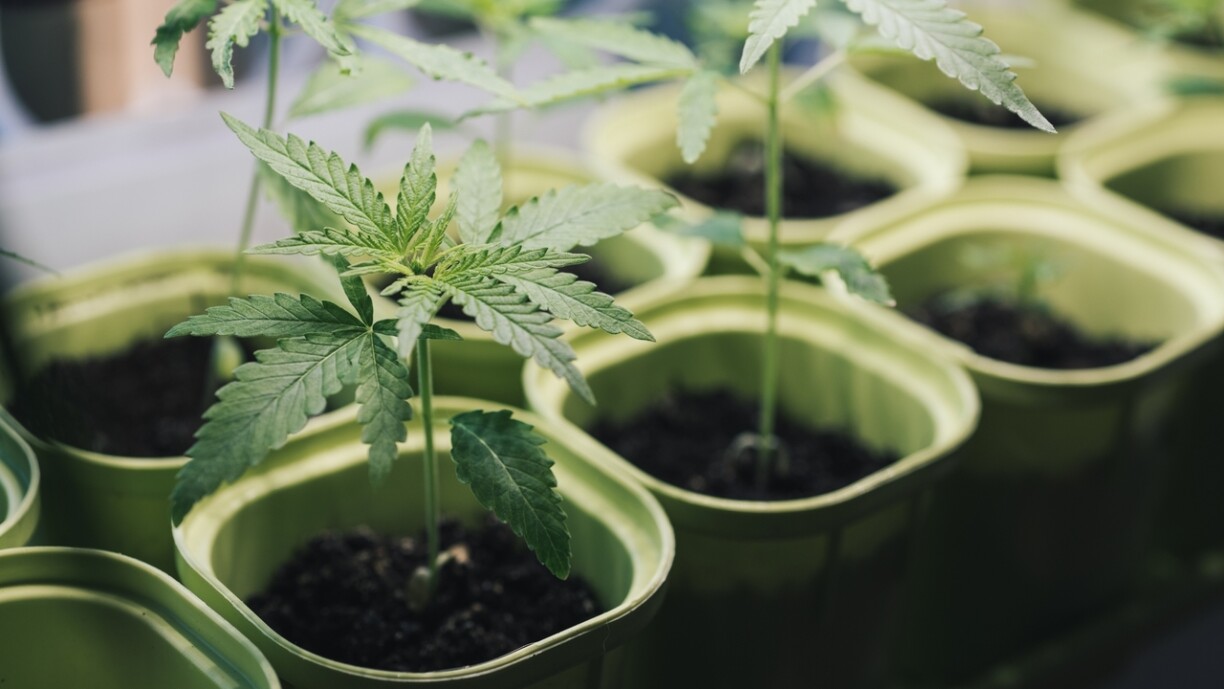
What is permitted under the new law?
Right now, growing cannabis at home is technically prohibited until the new law is published in the Memorial in July. Once this takes place, adults in Luxembourg will be permitted to cultivate up to four female cannabis plants per household.
The following criteria must be observed:
In addition, the penalties for possession of small quantities of cannabis will decrease; however, consumption in public remains prohibited. Fines of €145 are possible for people caught in public with less than 3 grams, at the discretion of the public prosecutor’s office.
Where can I buy seeds? And which standards must be adhered to?
Until the law comes into force, the purchase of seeds from cannabis plants that develop flowers with a value of more than 0.3% of THC is currently not permitted in Luxembourg. Once the law is official, seeds can be ordered online. A second phase envisions the development of a production and trade chain in the Grand Duchy.
In addition to an EU directive that regulates the import of seeds from third countries, the producer, the number of seeds and a health warning must be indicated on all seed labels. Countries such as the Netherlands, Spain and Austria have been working out concepts for the consumption of cannabis for years, with many cheap internet sites selling seeds that meet EU standards.
Where can I plant them ?
Plants can be cultivated at home - this means the primary residence of an adult who is part of a household. They can be grown either outside or indoors, but plants must not be visible to the public.
Where can I grow the plants outside?
Planting outdoors is strictly limited to the area directly adjacent to the person’s residence. In this way, plants can be grown in a personal garden, so long as it is not visible to the public. Planting is not permitted in communal gardens. In addition to the environmental aspect, cultivation outside is also cheaper than using special material to let the plants grow inside.
How to get started?
Cannabis plant seeds must first be allowed to germinate before they can be planted. This works much the same as with other plants. Place the seed between damp paper towels and moisten it again and again until it develops a small root. After the seedling has been planted in a pot, it will require a lot of light, but must not receive too much sun at once. It’s best to place plants on a windowsill or under a special light, until it develops four or five leaves. At this stage, the plant must be repotted, or placed in soil in the garden.
When outside, the cannabis plant has one natural growth cycle per year, as the plants grow best in hot conditions. It flowers when the days grow shorter, then requires 8 to 12 weeks until it can be harvested, which brings it to autumn. The cultivation of new plants is only feasible again in the following spring.
Indoors, specialist equipment is required for lighting, ventilation and irrigation, in order to mimic the optimal conditions found outside. In this way, plants can be cultivated in such a way to allow multiple harvests per year. However, it is significantly more expensive and time-consuming than growing outdoors, as the plants require constant care.
What occurs after harvest?
The number of flowers depends largely on the plant type and also its growth. Plants should be trimmed regularly to develop more flowers, so they grow in width rather than in height.
After harvesting, the flowers must be dried at an air humidity of around 60% for around a fortnight. After that, the cannabis should be allowed to mature in a glass jar for roughly a month. Special equipment can assist the process, such as pillows that regulate air humidity.
Does cannabis risk being glorified for its effects?
As with any drug, there are certainly health risks associated with the consumption of cannabis. The only way to avoid these is to avoid consumption at all.
The new law does not seek to trivialise cannabis, but instead aims to offer alternative solutions to a social issue at national level, and thereby reduce potential risks.
Consumers who purchase drugs on the black market can be exposed to increased risks. The legally defined standards, along with a regulated production and trade chain, will mean that plant quality can be better controlled.
The Ministry of Health’s pilot project for “legal access to cannabis for non-medical purposes” has published a number of responses to frequently asked questions on the topic on their
The working group of Santé for the “pilot project for legal access to cannabis for non-medical purposes” has published a number of answers to common questions on the subject of cannabis on their website.
Luxembourg legalises cultivation and consumption of cannabis at home